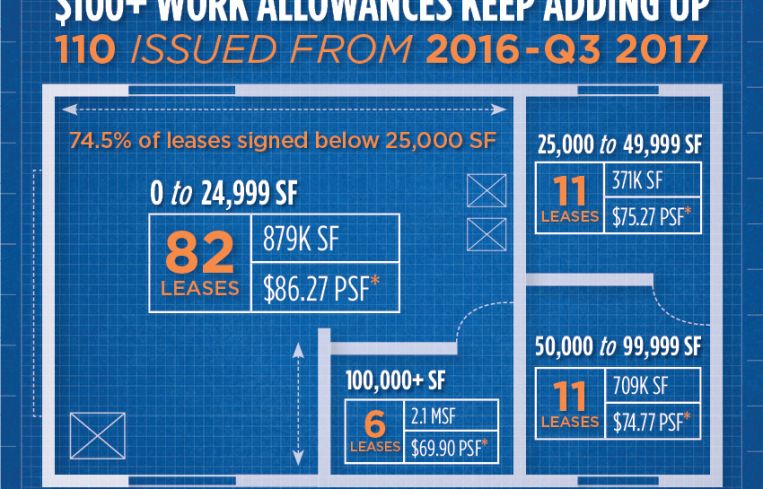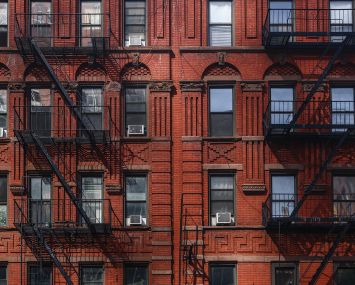Stat of the Week: 74.5 Percent
By Richard Persichetti October 24, 2017 3:21 pm
reprints
Earlier this year, I wrote about the $100-plus work allowance trend, and highlighted how more money was being offered by landlords for tenants to build out their spaces than ever before. Through the first three quarters of 2017, there were 66 leases signed with $100-plus work allowances and 110 since the start of 2016. This equates to 30.4 percent of new leases tracked with known tenant improvements over the past 21 months and is clearly a growing trend. Let’s examine how these 110 leases with $100-plus work allowances break down.
It comes as no surprise that the bulk of these leases occurred in Midtown, with 101 signed, while five were completed in Midtown South and four Downtown. From a square footage standpoint, these 110 leases totaled 4 million square feet of activity with an average lease term of nine years and nine months. The average starting rent for these leases was $74.80 per square foot, just 1 percent above the $74.06 per square foot average on all other new leases signed during this time. The majority of the leases signed with $100-plus work allowances were from smaller deals, as 74.5 percent were less than 25,000 square feet. Below is the size range breakdown for these leases:
• 100,000 square feet and greater: 6 leases—2.1 million square feet
—$69.90 psf starting rent
• 50,000 to 99,999 square feet: 11 leases—708,662 square feet
—$74.77 psf starting rent
• 25,000 to 49,999 square feet: 11 leases—371,001 square feet
—$75.27 psf starting rent
• 24,999 square feet and under: 82 leases—878,513 square feet—$86.27 psf starting rent
The leases below 25,000 square feet averaged starting rents 20.5 percent higher than the larger leases, as 15 of the leases began with starting rents of $100 per square foot and higher, compared with only one lease in the 25,000 square foot and greater range.
Add in the fact that construction costs continue to rise—according to international construction cost advisory firm, Rider Levett Bucknall—costs are up 4 percent year-over-year and more than 23 percent in the last five years, this is a trend likely to continue well into 2018.


